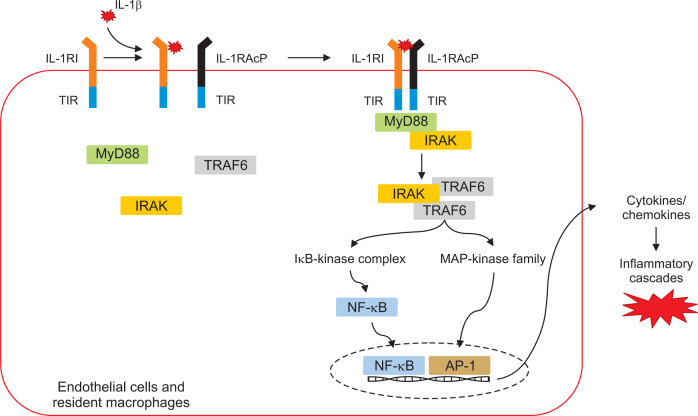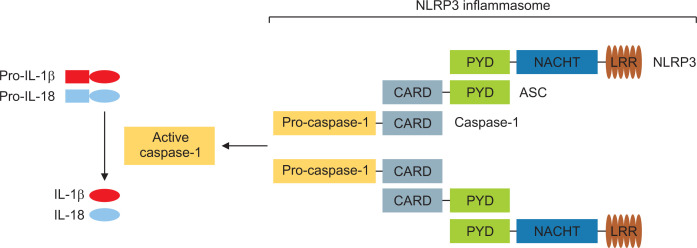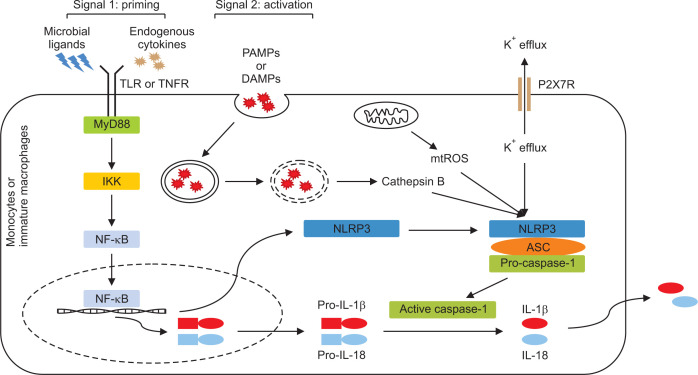The Mechanism of the NLRP3 Inflammasome Activation and Pathogenic Implication in the Pathogenesis of Gout.
IF 2.2
Q3 RHEUMATOLOGY
引用次数: 7
Abstract
The NACHT, LRR, and PYD-domains-containing protein 3 (NLRP3) inflammasome is an intracellular multi-protein signaling platform that is activated by cytosolic pattern-recognition receptors such as NLRs against endogenous and exogenous pathogens. Once it is activated by a variety of danger signals, recruitment and assembly of NLRP3, ASC, and pro-caspase-1 trigger the processing and release of pro-inflammatory cytokines including interleukin-1β (IL-1β) and IL-18. Multiple intracellular and extracellular structures and molecular mechanisms are involved in NLRP3 inflammasome activation. Gout is an autoinflammatory disease induced by inflammatory response through production of NLRP3 inflammasome-mediated proinflammatory cytokines such as IL-1β by deposition of monosodium urate (MSU) crystals in the articular joints and periarticular structures. NLRP3 inflammasome is considered a main therapeutic target in MSU crystal-induced inflammation in gout. Novel therapeutic strategies have been proposed to control acute flares of gouty arthritis and prophylaxis for gout flares through modulation of the NLRP3/IL-1 axis pathway. This review discusses the basic mechanism of NLRP3 inflammasome activation and the IL-1-induced inflammatory cascade and explains the NLRP3 inflammasome-induced pathogenic role in the pathogenesis of gout.



NLRP3炎症小体激活机制及其在痛风发病机制中的致病意义。
含有NACHT、LRR和PYD结构域的蛋白3(NLRP3)炎症小体是一种细胞内多蛋白信号传导平台,由胞浆模式识别受体(如NLRs)激活以对抗内源性和外源性病原体。一旦被各种危险信号激活,NLRP3、ASC和促半胱氨酸蛋白酶-1的募集和组装就会触发促炎细胞因子的处理和释放,包括白细胞介素-1β(IL-1β)和IL-18。NLRP3炎症小体激活涉及多种细胞内和细胞外结构和分子机制。痛风是一种自身炎症性疾病,由NLRP3炎症小体介导的促炎细胞因子(如IL-1β)通过在关节关节和关节周围结构中沉积尿酸单钠(MSU)晶体产生炎症反应诱导。NLRP3炎症小体被认为是MSU晶体诱导的痛风炎症的主要治疗靶点。已经提出了新的治疗策略来控制痛风性关节炎的急性发作,并通过调节NLRP3/IL-1轴途径预防痛风发作。本文综述了NLRP3炎症小体激活和IL-1诱导的炎症级联反应的基本机制,并解释了NLRP3-炎症小体诱导的致病作用在痛风发病机制中的作用。
本文章由计算机程序翻译,如有差异,请以英文原文为准。
求助全文
约1分钟内获得全文
求助全文

 求助内容:
求助内容: 应助结果提醒方式:
应助结果提醒方式:


